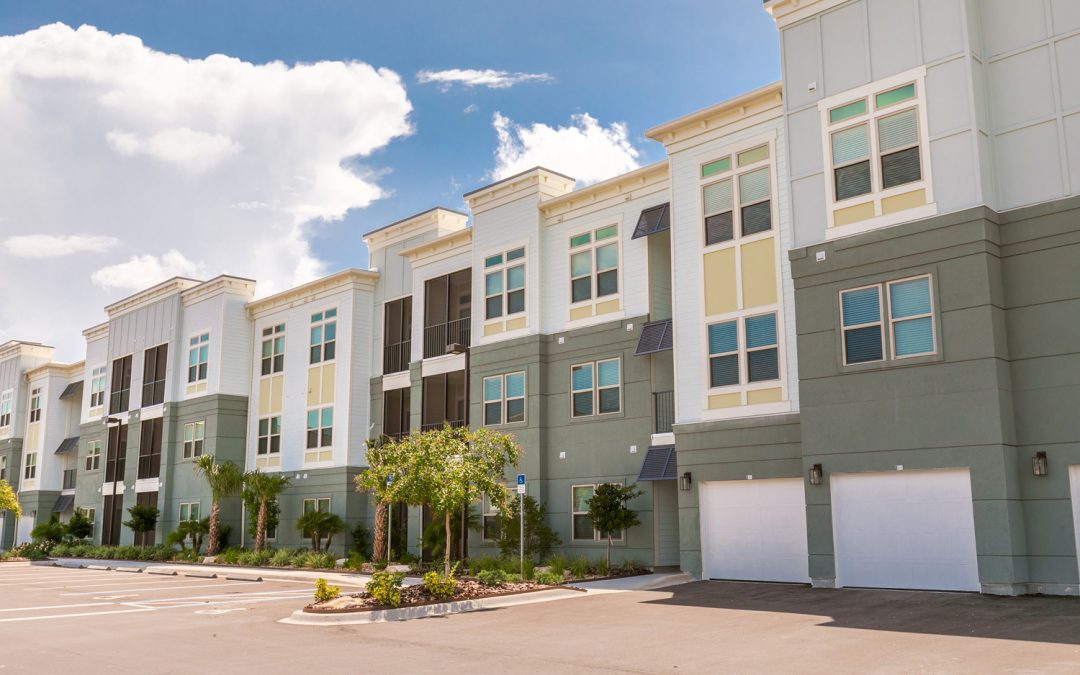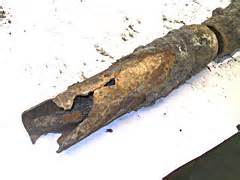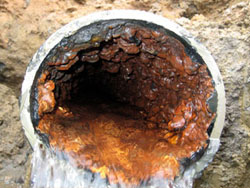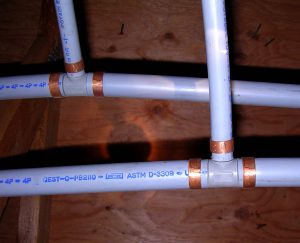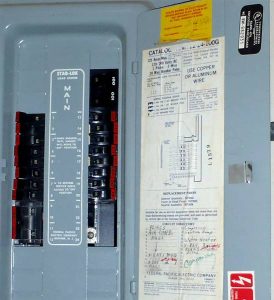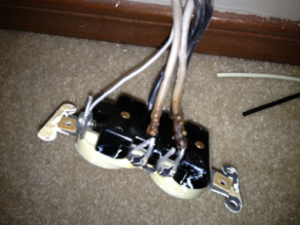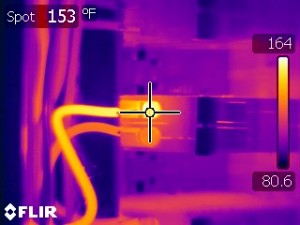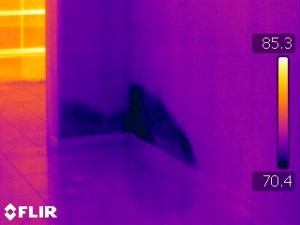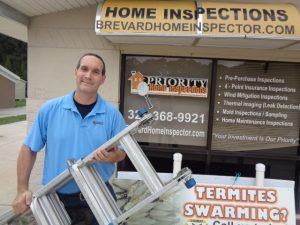If you are new to apartment investing learning as much as you can about investment properties will help ensure you make the right choices. Read everything you can. Attend seminars, Meetup groups and network with other multifamily investors. Seek out experienced investors, and ideally, see if you can provide them some kind of value, in exchange, they might mentor you. Talk to real estate agents and take steps towards joining investment clubs or commercial real estate focus groups. Nothing compares to learning from the practical experience of seasoned investors to help you make smart investment decisions. This will allow you to watch your portfolio grow and build generational wealth.
There are some great multifamily programs and academies available to grow your knowledge base. Jake & Gino’s Wheel Barrow Profits Multi Family Academy has some great information for new apartment investors. Their 3 prong strategy is buy right, manage right and finance right. Their academy includes a deal analyzer and tons of valuable content. Jake and Gino host live events annually and provide a wealth of information and are great networking opportunities to build your team and increase your knowledge.
Rod Khleif’s, Lifetime Cash Flow Academy is another one with great reviews. Rod also host annual multifamily boot camps. You should check out both to see which format you like the best. Jake & Gino and Rod both have podcast that provide tremendous value.
An apartment building can be a lucrative investment, if done right. A good investor seeks out the best advice, gathers all the information he or she can and then chooses the right property. A great investor will get to know local real estate agents and other investors. Finding a mentor can help fast-track your goals.
With the growing rental demand from millennial and baby boomers looking to down-size, apartment rentals in Florida, will stay in demand for years to come. With this growing demand the cap rates are getting compressed and deals are not as easy to come by, as they once were.
Doing your full due diligence when purchasing your new investment is critical. Having a healthy capital expenditure account is very important for deferred maintenance items. Making sure the building’s major systems like the roof, HVAC systems, electrical and plumbing are in working condition and have useful remaining life expectancies is very important.
Make sure all units are rent ready. Many “Mom & Pop” apartments may have a unit or two that are being used for storage. Not having these units rented will affect the NOI of your property. You should walk each unit and make sure the rent rolls are accurate. Talk with some of the tenants and ask what they like or dislike about living in the complex you are looking to purchase. Also make sure the rent-roll is accurate, deposits collected and dates the lease started is important data to collect. Often times prior to putting the property on the market, sellers will fill units without doing the proper background checks on the tenants. This makes the property look more profitable and easy to keep rented. This can pose a problem to you after purchasing the property.
There are many things you can uncover by doing a walk-through of the property before the inspection. Even if you only have access to a few units you can be on the look-out for certain material and brands. This is a guide of some basic due diligence you can perform when walking the property for the first time. This in no way should substitute having a professional inspection conducted by a qualified professional. Depending on the age of the property, there are some components and materials you should be aware of. Some of these items can affect your insurance rate, cost you money down the road and even cause problems if you decide to sell the property.
Plumbing System: With the plumbing system there are several things to consider. These are things you can confirm doing a walk-through of the property. Older properties built prior to 1970 are going to have cast iron drain lines. These cast iron pipes can be affected by the soil PH and the items put down the drains. Harsh chemicals like “Draino” can degrade the cast iron pre-maturely resulting in failure. Tree roots can also cause problems to the pipes. If you see large trees near the property there’s a chance they could be damaging the drain pipes. Asking the seller about any past drain line repairs, or problems is highly recommended. During your property inspection, the inspector should put as much stress on the drain lines as possible. This is done by flowing lots of water from multiple units at the same time. Other options are having an in-line camera inspection. Having the cast iron drain lines scoped is recommended. And while this is another fee, it could save you tens of thousands of dollars in costly repairs, or replacement. Often times property owners will say we had the cast iron replaced with PVC to the road. Keep in mind that there are still cast iron pipes within the slab and sub-flooring that could be corroding and in need of replacement.
Another thing to be on the lookout for is Polybutylene supply lines. Polybutylene (See Photo Below) was commonly used in the early 1990’s. Not only will these supply lines cost you thousands of dollars in costly repairs, or replacement, it will have an impact on your insurance rate too. And to make matters worse, some properties have copper supply lines coming from the wall, only to be attached to the Poly supply lines within the wall. To make sure it’s actually copper, push the pipes beneath a sink or at a toilet side to side. Copper should not be flexible and will be firm.
Cast Iron Drain Lines
Polybutylene Supply Lines
Water heaters: Check the date and condition of the water heaters you come across. The date is usually the first four numbers of the serial number and example would be a serial number that starts with 4115. This would indicate the 41st week of 2015. This can vary by manufacturer and you can look up the manufacture’s date codes online. The average life expectancy for a water heater is 10 – 12 years. If you see heavily corroded water heaters, have them replaced before catastrophic failure occurs is recommended. A failing water heater can result in extensive water damage to the unit, and surrounding units.
Roofing:
When it comes to roofing, the average life expectancy for a 30 year shingle is 15 – 20 years. This can depend on the location and climate the property is located in. In Florida, getting 30 years out of a shingle roof is practically unheard of. While walking the property you can look for raised or missing shingles, water stained ceilings and visible evidence of surface erosion, missing and damaged soffit and excessive sagging in trusses and fascia. Be sure to get the age of the roof for each building. Verify this information with the local building department by finding out when the permit was pulled for each building on the property. Often times to conserve money property owners will replace each roof as needed. If there are multiple buildings, there’s a good chance the roofs are different ages.
Also, all roofs have weak spots. These spots include roof to wall intersections, parapet walls, skylights and fascia and roof junctions. Be sure to examine the ceilings as you walk the units. If you see water stains, or touch-up paint ask the property owner about these areas.
Electrical Systems:
The NEC National Electric Code changes, and depending on the age of your property, it may pre-date certain requirements. Take GFCI outlets for example. These were not required until 1971 and at that point they were only required for exterior outlets. Eventually bathroom outlets were required to have GFCI outlets and in 1987 kitchens were required to be GFCI protected. Even if the property pre-dates these requirements having the wet area outlets upgraded to GFCI protection is highly recommend. GFCI outlets help prevent electrocution and are an inexpensive upgrade that will not only reduce your liability, but could save your tenant’s lives.
As far as the electrical panels go, the insurance industry has identified certain brands of electrical panels as “Potentially Hazardous” and properties with these panels may be denied coverage or be difficult to insure. These name brands include Federal Pacific Electric (FPE), Zinsco, Sylvania, Bryant, Bulldog, and Challenger. If your property has any of these brands, check with your insurance agent to determine the impact on your insurance policy and rates.
Another thing to ask the seller, about, is the presence of single strand aluminum wiring. Single strand aluminum wiring was commonly used between 1970 – 1974. These wires can work loose from the outlets and wall switches and cause a fire. This happens due to thermal expansion when the conductors heat up and cool off, they can come loose within the wall space. Single strand aluminum wiring can also have an impact on your insurance rate.
In the event the property is older and still has fuses in place, having the electrical system completely upgraded will likely be required by the insurance company and is recommended.
FPE Panel
Single strand aluminum conductors
Structural:
As far as the actual structure is concerned, you can look for signs of excessive settlement in the exterior walls and foundation. Hairline cracks are very common and should be sealed and painted. Cracks larger than 1/8th of an inch wide should be investigated more closely by a structural engineer. Other signs indicative of excessive settlement are windows and doors not opening properly or sticking. Settlement cracks are very common in most regions. If it’s a block building, take a look at the lintels above the windows and make sure they are not cracked. Lintels carry the weight of the blocks above and if cracked will need to be replaced over time.
Another common and costly problem many older properties have – are concrete balconies, walkways and stairs that are degrading and will need replacement. Take a good look at these areas while performing your walk through. Look for large cracks, spalling or delaminating concrete.
If the property is wood frame, look for evidence of water damaged wood, or visible signs of termites. Find out if and when the seller had the property treated. Even if no evidence of termites are found having the building treated for a preventive measure is recommended. If the building is stucco over wood frame make sure the stucco is not below grade. Ideally 4 – 6” of the foundation should be exposed (Depending on region). Stucco below frame is conducive to termites and provides hidden access.
Take a look at the windows for cracked glass and keep in mind older windows are not going to be as energy efficient.
HVAC: This can vary depending on region, age and size of the property. Often time’s older properties will have wall, or window units. If the property has central air conditioning it will usually be a split system. With a split system there is an exterior unit (Condenser) as well as the air handler inside each unit. The average AC manufacturer’s warranty is 10 years. These manufactures know that after 10 years the units can fail. The average life expectancy for a split system is 12 – 14 years. This can vary by region. To determine the age of the units – look at the first four digits of the serial number (Like the water heaters). If many of the units are 10 years or older, budgeting towards replacement is recommended. Your inspection company will take a look at the condition of the duct-work while inspecting the attic space.
Grounds: While walking the property observe the condition of the parking lot. Look for low spots or evidence of “Standing Water”. Standing water will usually cause surface to be discolored. How is the parking lot striping? Look for areas you can add value to the property and your future customers. Is there room for a dog park, or a place to put BBQ grills and picnic tables for your customers to enjoy? How is the exterior paint? Exterior pain is much more than cosmetic. Exterior paint helps protect the building’s envelope. What condition are the signage and landscaping in?
Creating clean safe and affordable housing, sense of community and nice returns are some of the rewarding benifits of investing in multifamily. Speak with some of the tenants as you walk the property and get their opinions and feedback on the property. See what improvements they would like made. In closing, be sure to get the proper inspections performed prior to closing on your new multifamily investment. Happy investing! The apartment space is very exciting and is suspected to see long-term growth through 2030. Investing in multifamily is an excellent way to preserve capitol, create cash-flow and build generational wealth. Hiring a competent inspector is very important and can save you a lot of money in costly repairs. When having an inspection performed, we recommend having all of the units inspected.
Having a professional property inspection of your new apartment building/s is very important. Make sure you have a clear understanding of the scope of the inspection and what is and is not included. Some inspection companies inspect a random sample of units and systems. At Priority Home Inspections, we perform commercial apartment inspections through-out Florida and the Southeastern United States. We provide a thorough inspection of each unit to ensure it’s “Rent Ready”. We inspect all of the building’s major systems – Roofing, Electric, HVAC, Structure & Plumbing). We will identify areas that can be improved, to make turning a unit (When someone moves) easier and less costly. We will get the age of each unit’s HVAC system and water heater to give you an idea of future expenses. Check for structural discrepancies and safety hazards the property may have. If there are major discrepancies, it is important to find them before purchasing the property. This can save you thousands of dollars in costly repairs and future headaches. We use infrared technology on all inspections. Infrared technology allows us to see problems not visible to the naked eye. These conditions can include plumbing leaks, roof leaks, electrical hot spots and water that may be intruding through the building envelope.
The power of infrared technology
Electrical hot spot Active shower-pan leak (Not visible with the eye)
If we can help you with your commercial inspection needs visit our website, contact us at 321-368-9921, or fill out our Contact Form and we will get in touch with you. We look forward to providing you peace of mind so you can make an informed decision about your investment.
Matt Hawley – Inspector / Owner

